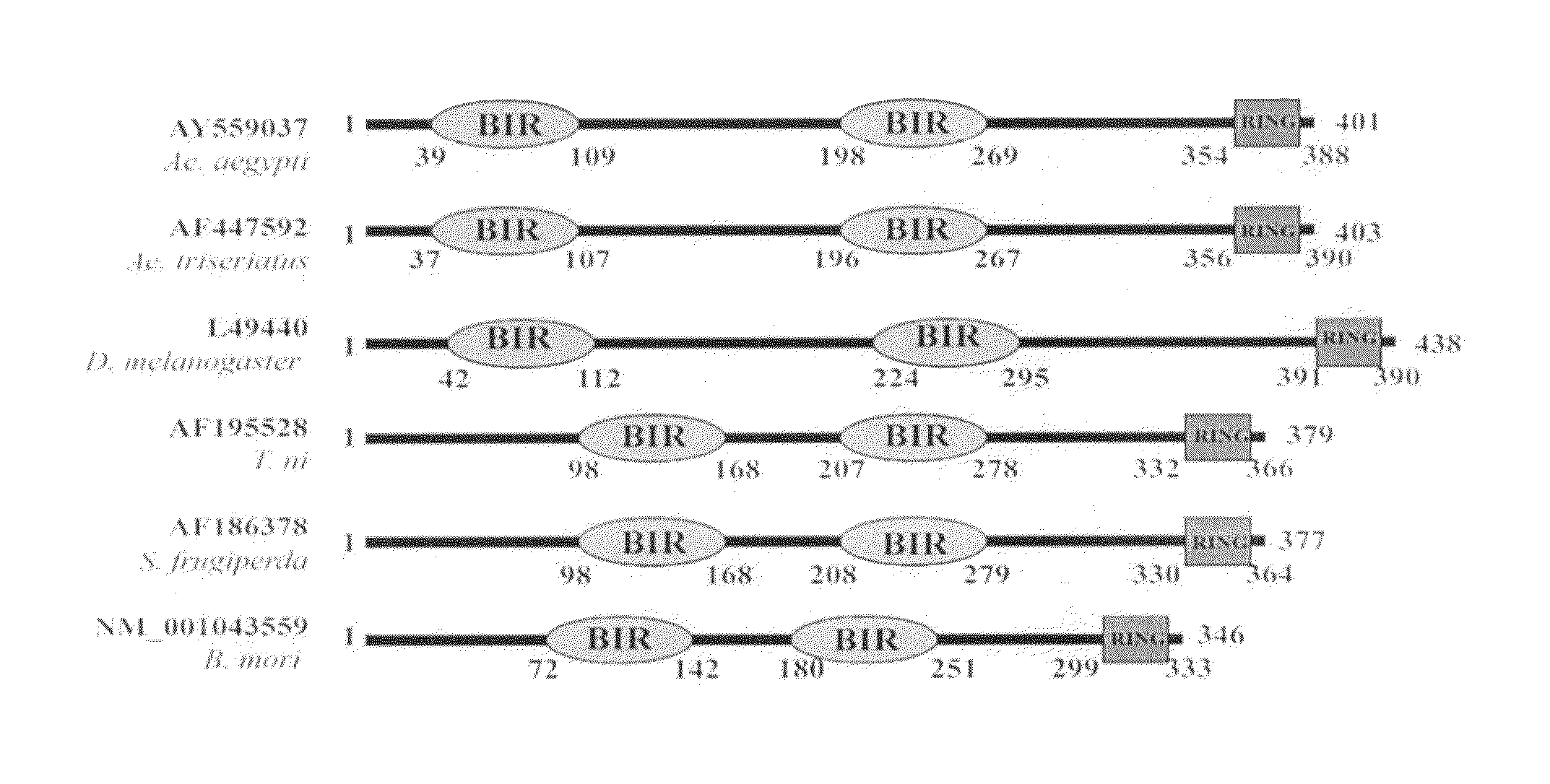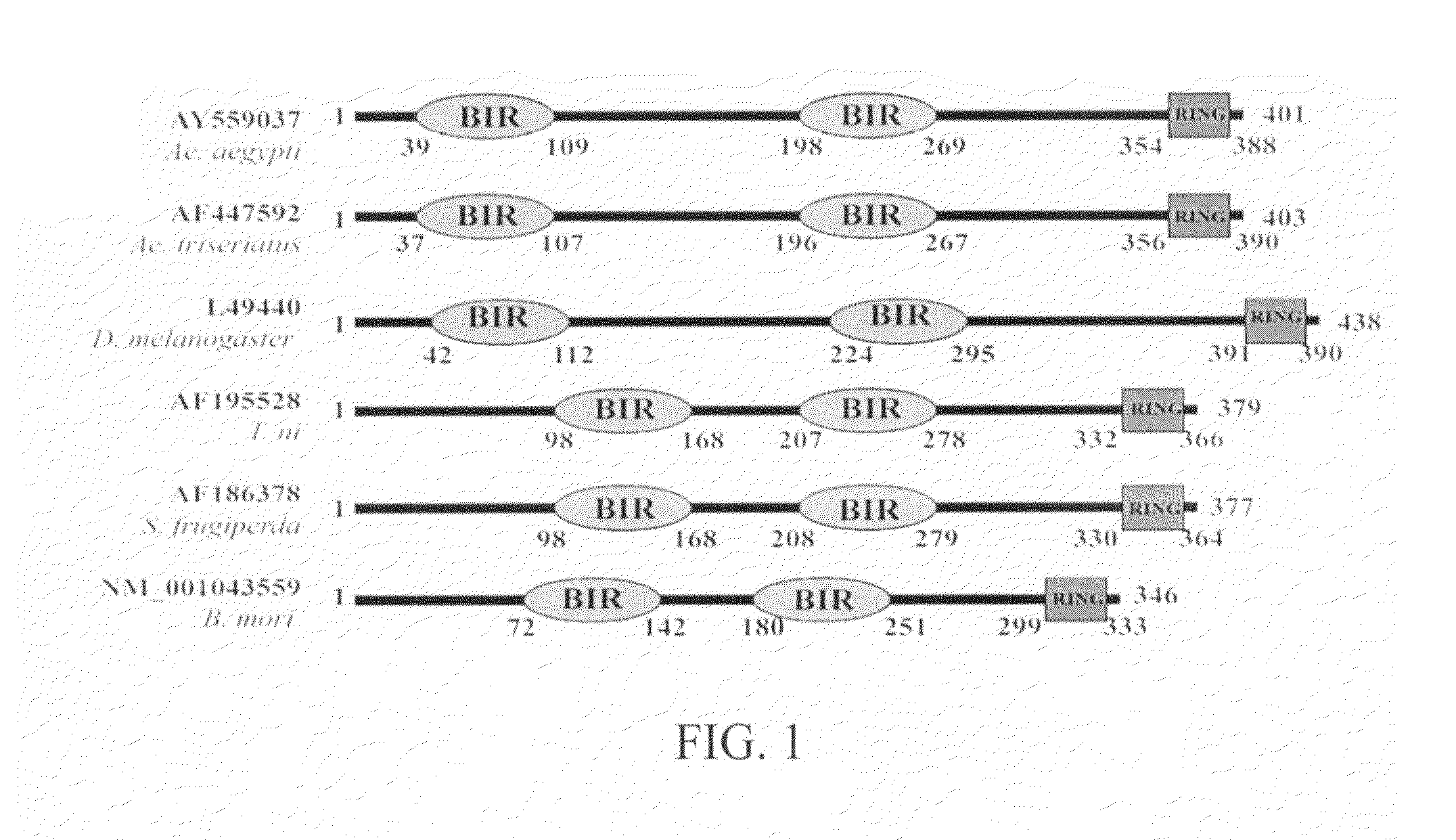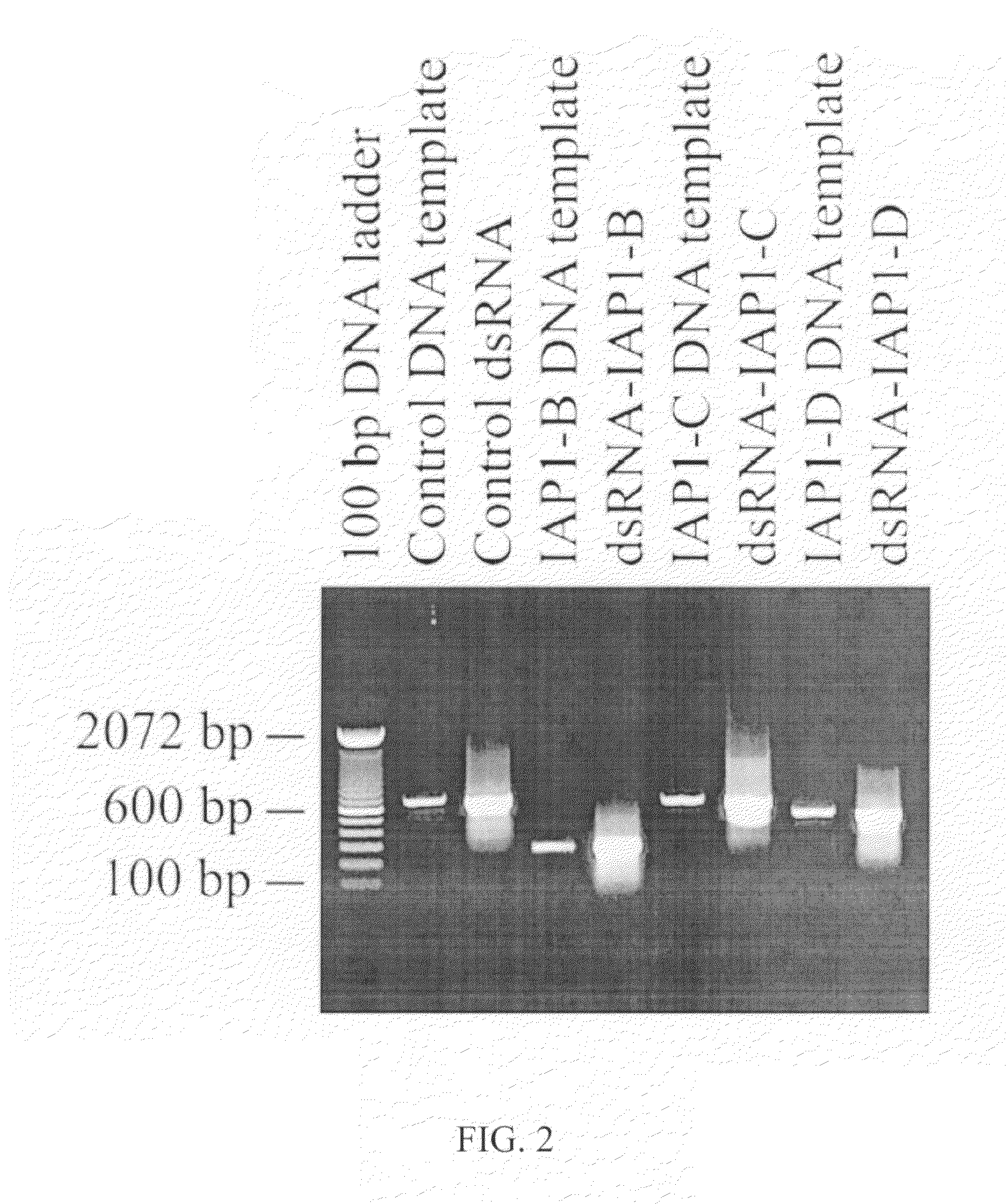Pesticidal double stranded RNA composition and method of use thereof
a technology of double stranded rna and composition, which is applied in the field of pesticides, can solve the problems of reducing crop yield, reducing crop quality, and reducing crop yield
- Summary
- Abstract
- Description
- Claims
- Application Information
AI Technical Summary
Benefits of technology
Problems solved by technology
Method used
Image
Examples
example 1
Cell Documentation and DNA Fragmentation Assay
[0069]The Aag-2 cells transfected with or without dsRNA products were seeded on 6-well plates and incubated at 26±0.5° C. Twenty four hours post-transfection, cells were photographed with a Nikon inverted microscope (Nikon, Lewisville, Tex.). Cells were then harvested for DNA fragmentation assay. DNA fragmentation is a hallmark of cells undergoing apoptosis (Darzynkiewicz et al. 2006). The DNA fragmentation assay was performed with a well established method by those having ordinary skill in the art (Masuda et al. 2004). Aag-2 cells transfected with or without double-stranded RNA were collected by centrifugation and washed with Dulbecco's phosphate-buffered saline (PBS) three times. The washed cell pellets were saved at −80° C. and were suspended in cell lysis buffer (10 mM Tris-HCl (pH 8.0), 10 mM EDTA, 0.5% SDS) containing 0.1% RNase A and incubated for 60 min at 50° C. The cell lysate was incubated for an additional 60 min at 50° C. in...
example 2
[0072]To verify the apoptotic effects of AaeIAP1 dsRNA products on Aag-2 cells, cell viability assays were performed. As shown in FIG. 3, little difference was observed between cells treated with or without non-silencing Cun85 dsRNA product. However, when Aag2-cells were treated with AaeIAP1 dsRNA products, cell viability decreased significantly (FIG. 5). Consistent with DNA fragmentation, the effect of dsRNA-IAP1-D and the combination of the three AaeIAP1 dsRNA products (dsRNA-IAP1-B, dsRNA-IAP1-C, and dsRNA-IAP1-D) on Aag-2 cell viability were greater than that by AaeIAP1 dsRNA-IAP1-B or dsRNA-IAP1-C (FIG. 5). The conversion of methyl thiazol tetrazolium (MTT) to a colored formazan has been used extensively as a marker for cell viability since the early 1980's (Mosmann T. et al., 1983. J. Immunol. Methods, 65:55-63; Niering P. et al., 2005. Toxicol Appl. Pharmacol., 209:114-112). The cell viability assay was performed using a well established protocol (Spee B. ...
example 3
RNA Extraction and Multiplex Reverse Transcriptase-PCR
[0073]Since AaeIAP1 dsRNA products induced apoptosis and reduced cell viability in Aag-2 cell lines, gene silencing effects caused by the treatments of AaeIAP1 dsRNA products were evaluated through multiplex RT-PCR and real-time quantitative PCR using actin as an internal control. As shown in FIG. 6, treatment of Aag-2 cells with AaeIAP1 dsRNA products significantly suppressed the expression of AaeIAP1. In contrast, little or no significant AaeIAP1 gene suppression was observed in cells treated with or without non-silencing Cun85 dsRNA product (FIGS. 6 A and B). Consistent with the results of DNA fragmentation and cell viabilities, AaeIAP1 expression was more suppressed by dsRNA-IAP1-D and the combination of the three AaeIAP1 dsRNA products (dsRNA-IAP1-B, dsRNA-IAP1-C, and dsRNA-IAP1-D) than by dsRNA-IAP1-B and dsRNA-IAP1-C (FIGS. 6 A and B).
[0074]Twenty-four hours post-transfection, Aag-2 cells were collected by centrifugation a...
PUM
| Property | Measurement | Unit |
|---|---|---|
| Time | aaaaa | aaaaa |
| Time | aaaaa | aaaaa |
| Time | aaaaa | aaaaa |
Abstract
Description
Claims
Application Information
 Login to View More
Login to View More - R&D
- Intellectual Property
- Life Sciences
- Materials
- Tech Scout
- Unparalleled Data Quality
- Higher Quality Content
- 60% Fewer Hallucinations
Browse by: Latest US Patents, China's latest patents, Technical Efficacy Thesaurus, Application Domain, Technology Topic, Popular Technical Reports.
© 2025 PatSnap. All rights reserved.Legal|Privacy policy|Modern Slavery Act Transparency Statement|Sitemap|About US| Contact US: help@patsnap.com



